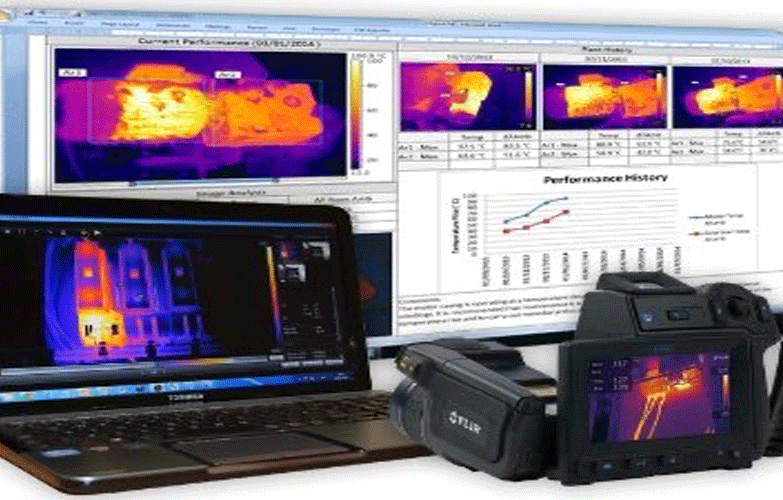Thermal Imaging Surveys in the Construction Industry
Enhancing Building Efficiency and Safety: The Power of Thermal Imaging Surveys in the Construction Industry In an era where sustainability […]

Enhancing Building Efficiency and Safety: The Power of Thermal Imaging Surveys in the Construction Industry
In an era where sustainability and energy efficiency are paramount, the construction industry is embracing innovative technologies to streamline operations, reduce costs, and enhance safety. One such game-changing tool gaining momentum is Thermal Imaging Surveys.
Leveraging the principles of thermography, these surveys offer a unique perspective into a building’s thermal performance, enabling professionals to identify hidden issues, optimise energy consumption, and ensure the safety of occupants. In this post, we delve into the significance of Thermal Imaging Surveys in the building industry and how they are revolutionising the way we design, construct, and maintain structures.
Understanding Thermal Imaging Surveys
Thermal Imaging Surveys involve the use of infrared cameras to capture and visualise temperature differences on a surface. This non-invasive technique provides a detailed view of heat distribution, highlighting areas of concern that may not be apparent through traditional visual inspections.
In the context of the construction industry, these surveys are conducted at various stages:
Pre-Construction Analysis: Prior to breaking ground, thermal imaging surveys can detect potential problems in the building’s design, such as heat loss or insulation gaps. Identifying these issues early can lead to more efficient energy usage and reduce future operational costs.
During Construction: Thermal imaging can pinpoint construction defects like poor insulation installation, air leaks, and moisture intrusion. Detecting these problems during construction can prevent costly rework and ensure the structure meets energy efficiency standards.
Post-Construction Assessment: Once a building is complete, thermal imaging surveys can help verify that the design intentions have been met. Additionally, routine assessments can identify maintenance needs, optimising building performance over its lifespan.
Benefits for the Building Industry
Energy Efficiency: Thermal imaging surveys allow professionals to visualise heat loss and energy leaks, leading to improved insulation and energy-efficient design choices. This is crucial for meeting stringent energy codes and reducing a building’s carbon footprint.
Cost Savings: By identifying defects and inefficiencies early, thermal imaging surveys can prevent costly repairs and renovations down the line. The ability to prioritise maintenance based on accurate data can save building owners substantial amounts of money.
Enhanced Safety: Detecting issues like overheating electrical systems, faulty wiring, or moisture buildup can mitigate safety hasards for occupants and workers. Thermal imaging surveys can prevent potential disasters by addressing these concerns proactively.
Quality Assurance: Contractors can use thermal imaging to validate the quality of construction materials and installations. This ensures that buildings are constructed to the highest standards, resulting in satisfied clients and positive industry reputation.
Sustainability and Green Building: Thermal imaging surveys contribute to the development of sustainable buildings by optimising energy consumption and minimising waste. Green building certifications such as LEED recognise the value of such assessments in achieving eco-friendly designs.
As the construction industry embraces technological advancements, Thermal Imaging Surveys stand out as a transformative tool for achieving efficiency, safety, and sustainability in building design, construction, and maintenance. The ability to identify hidden issues, enhance energy performance, and ensure occupant safety positions these surveys at the forefront of modern construction practices.
With the promise of reducing costs, improving quality, and contributing to a greener future, Thermal Imaging Surveys are a clear asset to the building industry in its pursuit of excellence.